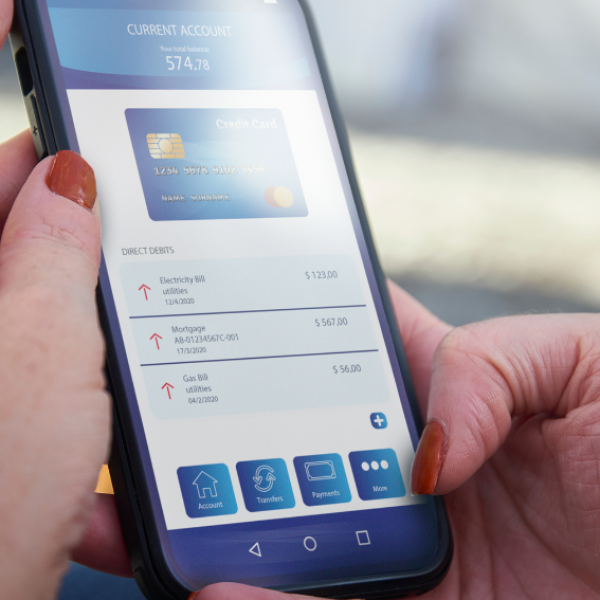If your sales are not increasing, it indicates a significant problem. Many companies experience issues with slow or absent sales, and there are numerous reasons why your sales team might struggle to convert leads into sales. It’s becoming clear that traditional sales tactics such as phone calls and routine follow-up emails are not as effective for most businesses today.
A Sales Development Representative (SDRs) is crucial in generating leads, identifying potential customers, and qualifying them. They also enhance the marketing strategy by sharing insights from their interactions with prospects.
In the current competitive market environment, businesses require a more effective strategy to close sales. Therefore, sales development is becoming an essential component of the sales process.
In This Article
ToggleWhat Is Sales Development?

Sales Development refers to a range of activities within the sales process. It represents a modern approach to sales that integrates processes, people, and technology. The core principle of sales development is more effective selling to individuals already interested in your product or service rather than to those unfamiliar with it. While this concept might seem straightforward, it has gradually been incorporated into traditional sales strategies.
Sales development focuses primarily on the initial phases of the sales cycle. It does not involve closing sales—that responsibility lies with the Sales Development Representatives (SDRs). Nor does it include promoting the product or service, which is the role of marketing.
Instead, sales development concentrates on discovering, connecting with, and qualifying leads before handing them to the sales team.
SDRs are crucial in generating sales-qualified leads and enhancing overall sales success. Their responsibilities extend beyond lead generation; they deeply understand market trends, buyer behavior, product quality, and user experience.
What Are the Responsibilities of a Sales Development Representative?

Here are the six most essential responsibilities of an SDR:
- Lead Generation:
SDRs are crucial in identifying and generating potential leads. They collaborate closely with marketing teams to gain insights into ideal customers’ target demographics and characteristics. SDRs actively engage potential clients using a mix of strategies, including cold calls and emails, ensuring a steady flow of leads into the sales funnel.
- Lead Qualification:
Identify leads that show potential for purchasing and match your target customer profile. Once a lead is deemed qualified, move them forward in the sales process, which may include scheduling a sales call, a product demonstration, or a consultation.
- Initial Outreach:
SDRs are responsible for the initial communication with potential leads using various channels, such as email, telephone, and social media platforms. This initial contact aims to grab prospects’ attention, spark their interest, and engage them in dialogue. Effective initial outreach opens the door for deeper conversations about the products or services offered, setting the stage for subsequent sales activities.
- Prospect Engagement:
Identifying and connecting with potential customers is crucial. To locate your target audience, explore platforms like trade shows, social media, conferences, and more. Collect names and contact details and establish a routine to engage these prospects through tailored content, emails, and event invitations. Be prepared to communicate frequently through phone calls and emails.
- Establishing Brand Perception:
As potential customers’ initial contact, it’s your job to create a positive image of your brand. Ensure that your communications are professional and engaging. Express genuine interest in your prospects’ needs and goals. Maintain professionalism through appropriate attire, eye contact, and confident body language when meeting in person.
- Education of Prospects:
Educating potential customers about your brand, products, and services is vital at the early stages of their decision-making process. Ask insightful questions to understand their needs and challenges better. Provide information that aids them in making informed purchasing decisions.
- Filtering Prospects:
It is essential to recognize which prospects are not suitable for advancing in the sales process. This helps the sales team concentrate on nurturing leads more likely to convert into sales. Factors that might disqualify a prospect include a lack of interest, certainty in their needs, or adequate budget.
- Continuous Follow-Up:
SDRs are vital in keeping the communication lines open with leads unprepared for a direct sales discussion. This involves nurturing these potential customers by sending regular follow-up emails, offering valuable information, and providing relevant content. The objective is to remain prominent in these prospects’ minds, ensuring that the SDR is the first person they think of when they are ready to engage in the sales process.
- Data Analysis and Management:
SDRs are responsible for the meticulous upkeep of the CRM (Customer Relationship Management) system, ensuring all prospect data is current and accurately recorded. This includes documenting all interactions, tracking how leads engage with the content, and noting any feedback or responses. Analyzing this data helps SDRs evaluate the impact of their outreach efforts and adjust their strategies accordingly to enhance overall effectiveness and increase the rate of successful conversions.
- Team Communication:
Effective communication with your sales team is essential as you progress leads through the sales process. Ensure that transitions are smooth for the prospects. You may interact with various team members, such as inbound sales representatives, who collect detailed information from leads, or account executives tasked with closing the sales.
Why Should Your Business Consider Hiring Sales Development Representatives?

Organizations often set up structured processes and create teams or work with a specialized SDR agency to manage workflow efficiently and meet objectives within specific deadlines. Although it’s widely recognized that Sales Development Representatives (SDRs) play a role different from those closing the sales, it’s worth considering why a specialized pre-sales or inside sales team is crucial.
- Market Competition: High sales targets are challenging due to strategic competition and ubiquitous online access. Traditional geographic benefits for digital services have lessened. In this environment, SDRs are critical in maintaining and increasing sales.
- Complex Sales Decisions: The sales process can slow down with several decision-makers involved. SDRs keep potential clients engaged until a decision is finalized, allowing the sales team to dedicate their efforts to other priorities. SDRs also help persuade these decision-makers, freeing up the core sales team to focus on finalizing deals.
- Boosting Up Sales: Momentum is crucial in sales. Relying on a single team can slow down operations. This is especially true for startups, which need fast transactions to avoid funding shortfalls. Companies employ SDRs to accelerate sales by acting as a bridge between the marketing and sales teams, helping to move leads to active customers more quickly. Let’s discuss this briefly in the next section.
How Can Sales Development Representatives Boost Sales?
As we have mentioned throughout this article, SDRs play a crucial role in enhancing the effectiveness of your sales team. They engage with potential customers to understand their needs and assess the suitability of your products or services. This process streamlines the sales cycle and amplifies the potential for closing deals.
Here are some insights on how they contribute to boosting sales:
- Streamlining the Sales Process: SDRs significantly speed up the research phase, allowing your sales reps to focus more on closing deals. By taking on early-stage activities like lead qualification and initial contact, SDRs free up valuable time for your sales reps, enabling them to concentrate on more complex tasks that lead directly to sales.
- Lead Generation and Opportunity Identification: SDRs are adept at identifying and pursuing new business opportunities. This is largely thanks to their skills in multi-channel prospecting, which includes using social media, emails, and phone calls to engage potential clients. Their ability to pinpoint high-potential prospects ensures a steady supply of fresh leads for the sales team to follow up on.
- Reducing Customer Acquisition Costs: SDRs help lower customer acquisition costs by efficiently managing the sales funnel. By ensuring that only qualified leads are passed on to the sales team, SDRs increase the likelihood of conversions and reduce the time and resources spent on leads with lower potential.
- Gathering Market Insights: SDRs gather essential insights into market trends and customer needs, which helps them tailor their business offerings to better meet customer demands. Their frontline interaction with prospects provides valuable data that can be used to adjust marketing and product strategies, thereby aligning their offerings more closely with market needs.
- Enhancing Sales and Marketing Alignment: By working closely with marketing teams, SDRs ensure that the insights gathered during customer interactions inform marketing strategies, leading to more effective marketing materials and campaigns. This alignment helps in creating a more cohesive buyer’s journey and enhances the overall effectiveness of your sales and marketing efforts.
- Use of Technology: SDRs use various CRM tools and automation software to enhance their productivity and effectiveness. These tools help manage and track leads, automate repetitive tasks, and provide data-driven insights for refining sales strategies.
Tips for Improving Sales Development Performance
It’s crucial to equip your sales team with what they need to succeed, though individual requirements may differ. Having a clear starting point is beneficial. Here are five strategies that every sales development representative can use to strengthen relationships and boost sales:
- Focus on Deeper Connections with Fewer Calls
Today’s influential sales development representatives focus on quality rather than quantity. This approach might seem unusual for many sales professionals accustomed to the belief that more calls lead to more chances of a yes.
However, by dedicating more time to building connections with fewer prospects, representatives can provide a level of value that is increasingly necessary to secure sales.
- Be an Active Listener
Many sales representatives are skilled at speaking, but effective communication is more than just talking. Instead of reciting from a script and promoting products or services indiscriminately, it’s beneficial if representatives listen attentively when a potential customer engages.
Understanding a customer’s primary challenges rather than ticking boxes on a checklist allows sales representatives to offer tailored, impactful solutions. This not only meets sales goals but also fosters customer loyalty.
- Increased Interaction Points
An interaction point, a first contact, encompasses various methods to engage sales prospects, such as phone calls, emails, or in-person meetings. Research suggests that it usually takes about 18 touchpoints to elicit an initial response from a prospect. Additionally, 80% of sales require at least five follow-up calls after a meeting.
However, 44% of sales representatives give up after just one follow-up attempt. While there may be concerns about contacting a prospect too often and being seen as intrusive, evidence indicates that increasing interactions can be beneficial, provided these interactions are substantive.
- Effective Sales Materials
Effective sales materials often rely on strong collaboration with the marketing department. These materials are helpful for potential customers and justify reasons for sales teams to continue follow-up efforts. High-quality sales collateral can pique interest and encourage further discussions, helping sales teams to move prospects further down the sales funnel.
- Well-Structured CRM System
CRM software is vital for efficient sales development. An effective CRM system should be easily accessible to all team members and feature a well-documented process. This setup helps team members to track and pinpoint potential ideal customers effectively.
Conclusion
Sales Development Representatives (SDRs) play a vital role in boosting your sales by streamlining the initial stages of the sales cycle. They handle lead generation, initial outreach, and lead qualification, freeing up your sales team to focus on closing deals. SDRs also gather valuable market insights, help align sales and marketing strategies, and reduce customer acquisition costs.
SDRs enhance productivity and efficiency by using technology and maintaining a well-structured CRM system. Ultimately, their ability to engage prospects, understand market trends, and qualify leads ensures a steady flow of high-potential opportunities, significantly contributing to increased sales performance and business growth.
Frequently Asked Questions
What Is the Role of a Sales Development Representative (SDR) in Boosting Sales?
An SDR focuses on generating and qualifying new leads by reaching out to potential customers. By effectively qualifying leads, SDRs ensure the sales pipeline is filled with prospects more likely to convert, thus boosting overall sales efficiency and effectiveness.
How Do SDRs Qualify Leads to Improve the Sales Process?
SDRs engage with potential customers through calls or emails to assess interest and fit for the product or service. Active listening helps understand prospects’ needs, ensuring only those with genuine potential move forward in the sales pipeline, thus improving sales team efficiency.
What Skills Are Essential for an SDR to Be Effective?
Essential skills include communication, active listening, resilience, and organizational abilities. SDRs communicate persuasively, actively listen to prospects’ needs, bounce back from setbacks, and stay organized to manage leads efficiently, fostering strong relationships and maintaining an efficient pipeline.
How Does Collaboration Between SDRs and Other Sales Team Members Enhance Sales Performance?
Collaboration ensures a seamless transition of qualified leads through the sales pipeline. SDRs provide valuable information about prospects to account executives, who tailor their strategies accordingly. This approach leads to higher conversion rates and improved sales outcomes through a unified team strategy.










